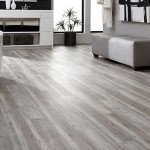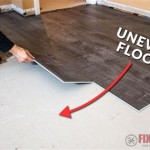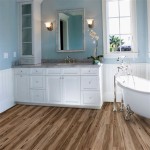Essential Aspects of Laminate Flooring Molding Types
Laminate flooring is a popular choice for its durability, affordability, and ease of installation. However, one often-overlooked aspect is the choice of molding types, which play a crucial role in enhancing the overall look and functionality of the floor.
Types of Laminate Flooring Moldings
There are several types of laminate flooring moldings available, each with its unique purpose and aesthetic appeal:
- Base Molding: This molding is installed along the base of the wall and covers the gap between the flooring and the wall. It protects the flooring from moisture and prevents dirt and debris from accumulating.
- Quarter Round: Quarter round molding is used to create a smooth transition between the flooring and other surfaces, such as stairs or thresholds. It also conceals any gaps that may occur due to expansion and contraction of the laminate flooring.
- End Cap Molding: End cap molding is used to cover the exposed edges of laminate flooring at transitions, such as doorways or room transitions. It provides a finished look and prevents moisture from seeping into the flooring.
- T-Molding: T-molding is used to create a seamless transition between two adjacent laminate flooring surfaces, often of different heights or orientations. It provides a smooth and aesthetically pleasing joint.
- Reducer Molding: Reducer molding is used to transition between laminate flooring and other types of flooring, such as carpet or tile. It reduces the height difference between the two surfaces, creating a smooth and unified look.
Choosing the Right Molding
When selecting molding types for your laminate flooring, consider the following factors:
- Style: Choose molding that complements the design and color of your flooring and home décor.
- Function: Determine the specific purpose of each molding, such as transition, moisture resistance, or edge protection.
- Installation: Consider the ease of installation of the molding, especially if you plan to DIY.
- Material: Moldings can be made from various materials, such as wood, PVC, and MDF. Choose a material that is durable and matches your flooring's characteristics.
Installation Considerations
Laminate flooring moldings are typically installed using nails, glue, or a combination of both. Ensure the molding is cut precisely to fit the specific area and fastened securely to provide stability. If you are not comfortable installing the molding yourself, it is recommended to consult a professional.
Conclusion
Choosing the right laminate flooring molding types is essential for completing your flooring project with style and functionality. By considering the types available, selecting the appropriate moldings for your needs, and paying attention to installation, you can enhance the beauty, durability, and overall satisfaction of your laminate flooring.

Laminate Flooring Molding U S Floor Masters

Moldings Guide Floor Molding Styles And Types

Flooring Transition Strips Moldings Trims Onflooring

The Most Common Flooring Trims How They Are Used

The Basics Of T Molding Definition Uses And Types Tallest Tree

Seamless Transitions A Guide To Installing And Choosing Floor Molding Mr Sander

Flooring Transition Strips Moldings Trims Onflooring

Transition Mouldings

Your Complete Guide To Flooring Transition Strips Builddirect

Flooring Transition Strips Moldings Trims Onflooring
Related Posts








